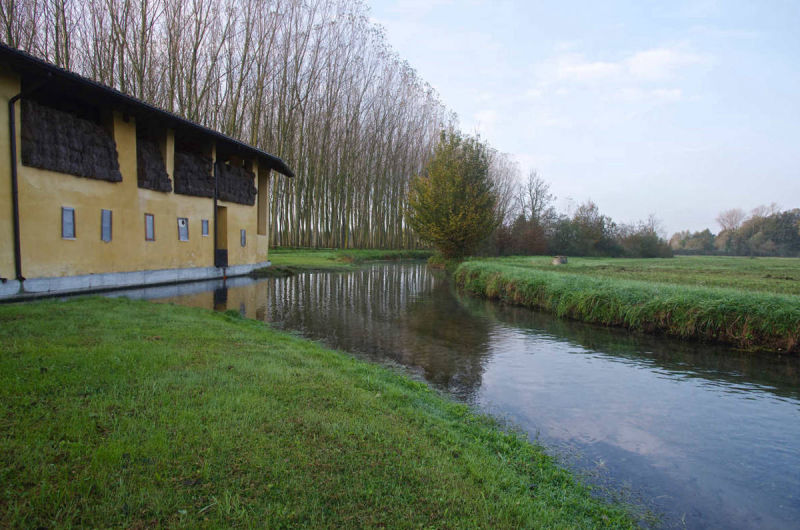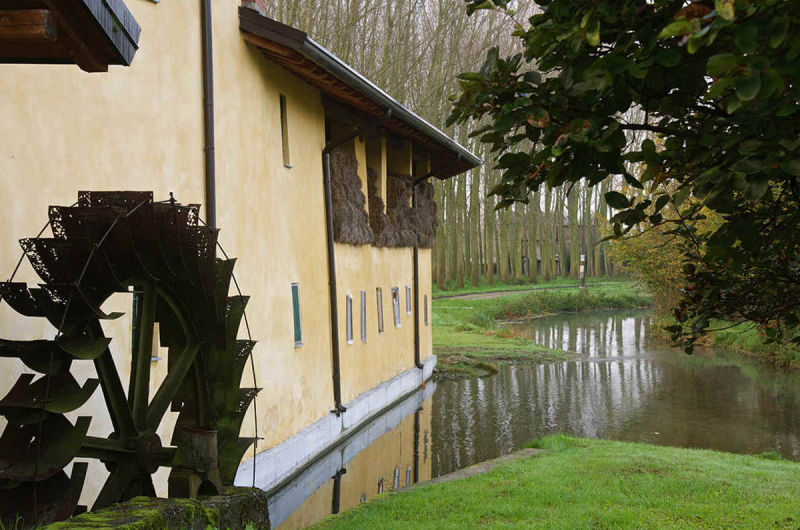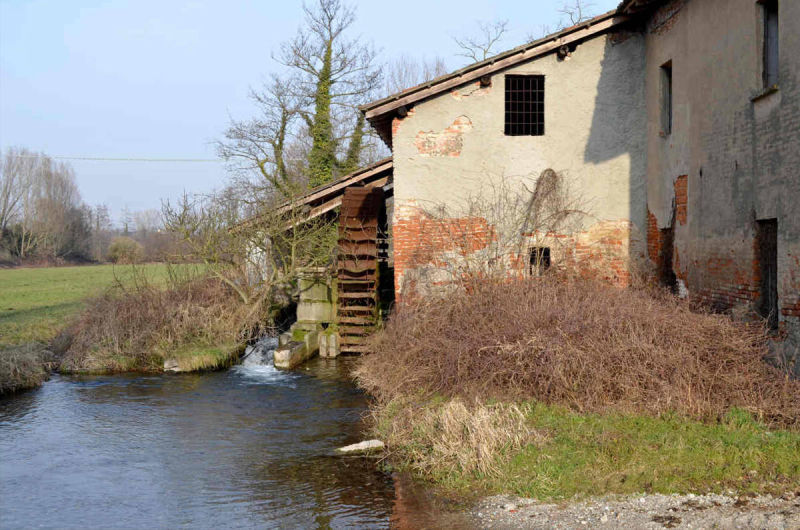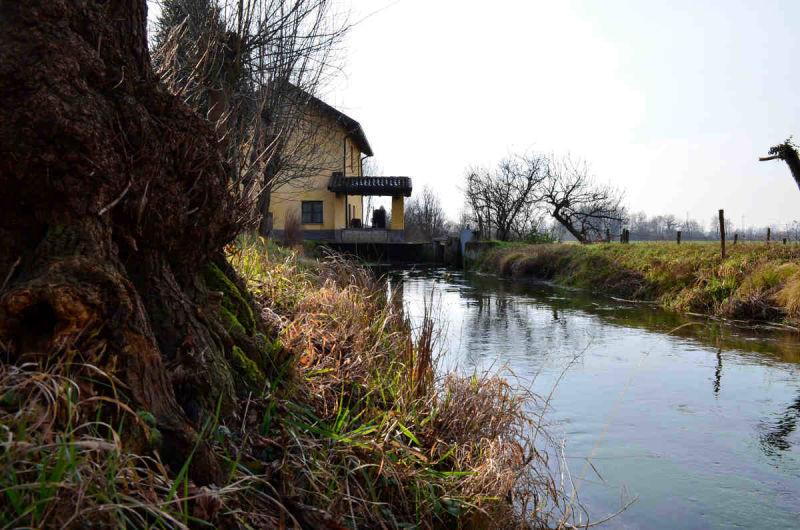The mills








The mills were the first machines to exploit the energy of the water , they represent a landmark
in the economy of the Lombard plain, and since the Middle Ages were used for the exploitation
of the energy.
The Mills
The importance of the mills was such that Federico II in 1245, in order to be able to win Milan,
destroyed Casterno and its mills, to prevent food supplies.
The millers were also promoters of hostile acts against the new Italian government that in 1868, to
bring the budget in balance, introduced a grist tax which provided a fee of 2 lire per quintal of wheat,
1 lira for maize and rye and 1.20 lire for the other cereals. The tax will then be abolished in 1884.
Casterno Mill
The presence of the Naviglio Grande as an inland waterway for the transport of goods has stimulated
in the centuries the productive and commercial role of the surrounding territories. This, also connected
to the abundance of waters flowing and regulated through the complex system of canals and irrigation
ditches, has encouraged, in the territory of Robecco and neighbouring areas, the development of the
milling activity.
The activity of Casterno’s mills lasted until the beginning of the twentieth century. About the mills and
the lives of those who worked there lots of testimonies have been collected here.
Currently most mills are in disuse or little used. Once, the Bianchi tell, early in the morning they went
to the farmsteads to pick the wheat to grind and in the evening they brought back the bags filled with
soft flour to their farmers. In the context of the municipal territory of Robecco, in addition to the mill
Pietrasanta, also the mill Ceriani is fed by the Roggia Guadate, while the mill Marchesonia by means
of the Roggia Remarcia; finally the mill Albani along the Roggia Verga and the mill Saint Marta on
“cavo” Monegata .
The latter, perfectly restored even if not working is visible at the Agritourism
S.Marta.
We then have the wheel from the cascinello of Visconta, in the past presumably intended
only for private use.
Located in the eastern part of the valley, there have been certain news about
it since 1489, as it is mentioned in a public act about family Casati’s possessions and appears
in 1827, with the name of "Molino Casati".
The mill is located along the course of the Roggia Vergo, one of the “fontanili” which pass
through the area.
The perimeter walls seem to be older than the rest of the complex.
The complex was given the
current appearance in the nineteenth century, thanks to the work of the family Albani, who
intervened to protect the outer wheel with the realisation of a tiled roofing.
One of the wheels used in the Mill is currently preserved at the Villa Gromo di Ternengo in
Robecco.
It is located in the south-west border of the center of Carpenzago. In some
documents dating back to 1551 and 1603 a mill near the roggia Guadalla is mentioned. Other
sources instead date the construction of the mill back to the nineteenth century.
Today it lies in precarious conditions, being largely ruined. The water wheel is in disuse since
the early nineties, and all the building appears neglected for a long time.
t is situated in the valley, and then to the west of the town of
Robecco. With respect to the valley it is situated in the northern part, before the Cascina
Marchesonia and accessed from the road that leads from Casterno to Carpenzago.
According to some sources the mill dates back to the fourteenth century, due to some frescoes
typical of this period, even if now they are lost; according to other sources instead it has been
there at least since 1607. We have indeed certain news on this date about the family
Marchesoni, the owners it takes the name from and Giovanni Antonio Marchesoni proves to be
the legitimate owner of a notarial deed dating back to 1607.
In the eighteenth century it was certainly already working, and it was the main mill of the area.
Powered by the Roggia Remarcia it is also called "Mill of force" because towards the end of the
XIX century the owner designed a system for generating electrical energy by exploiting the
hydraulic energy produced by the wheel.
It is the only mill of the area not to have undergone a structural change of a certain importance.
The whole complex was restored recently, including the wheel of the mill, which is in a very
good condition.
Located in the south-west of the center of Carpenzago at the
confluence of the roggia Guastalla and Verga, the Molino Pietrasanta is among the most ancient
of Abbiategrasso territory.
The mill goes back at least to the beginning of the fifteenth century
as evidenced by the date 1404 on the fresco that until a few decades ago was on a wall of the
building depicting the Madonna and Child next to S. Sebastiano.
Now the fresco is preserved in the church of Carpenzago, and on the wall of the mill remained
the "sinopia". Originally the mill belonged to the friars and was called: "Molinetto of the Friars
of the Opera Pia di Falco". Later it became the property of the family Pietrasanta.
It used to work up to a few decades ago and now it preserves the two water wheels of
different dimensions .
They moved three pairs of millstones, two used for the mixture of millet
and rye, one for wheat.
it is fed by the “roggia” Monegatta, originated from the “fontanile”
adjacent to a chapel dedicated to Santa Marta, from which the mill takes the name.
Until a few years ago it had completely fallen into disuse and the mill was so transformed into
a farmland, with the removal of the original wheel.
Now the situation has changed profoundly.
Only the structure of the complex remains unchanged but the purpose and all the buildings
have undergone an important restoration. The whole complex is in fact transformed into an
excellent holiday farm .
The mill is working and inside we can still find the original wheel,
gears in wood, the stone grinder and tools used in the past.
How to start your own site - Click for more